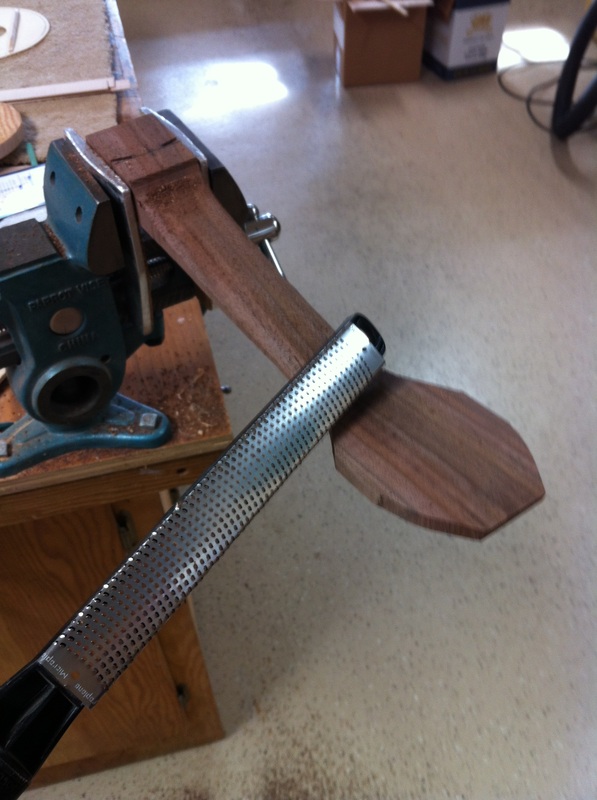After putting another coat of French Polish on the tenors this morning, I turned my attention to the Pinecone necks. I carefully calculated where the nut would sit, then moved forward to the 14th fret where I want the sides to join the neck. Then I cut the slots for the sides into the neck.
| After carefully calculating where the nut goes, and where the 14th fret is going to be I am ready to cut the two slots for the sides. You must check that your bandsaw blade is exactly 90 degrees to the saw table, To get that angle wrong can cause you endless headaches fighting buzz later on. I work around the heel with a gouge driven by gentle taps with a Lignum Vitae mallet, It hogs off a lot of wood in a hurry. | Here is where the carpenter leaves and the sculptor arrives. Carving a sexy, slick and good to the hand neck is crucial to a good instrument, and you can only get there by experience. I start the shaping with a pretty aggressive rasp that leaves major marks. Then I move to a gentle rasp with fine teeth. It is flat on one side and rounded on the other. Smoothes things up nice. After this rough work I will be doing lots of refining with a scraper, finally with sandpaper. |
Here I am using a "sled" on the table saw to nibble the flat that the soundboard will be glued to. By setting the blade to cut exactly the thickness of the soundboard it is quite easy to nibble, one pass at a time until you have created a flat plane that brings the soundboard exactly level with the top of the neck. Use your finger to tell you when you have it right. In picture #6 you can see that plane. You must do a little work with a rounded chisel to carve away the curved piece allowing the curved soundboard to fit snugly in there.1






